Saganishiki - Japanese silk & paper brocade
This past week (January 22 through 26, 2007), I've been taking a Saga nishiki (also: saganishiki) workshop with Mihoko Karaki. It's a Japanese weaving technique that uses a gilded or lacquered rice-paper warp, and a silk weft. The design possibilities are AMAZING. The technique is uniquely Japanese, and is used traditionally to make handbags, jewelry, obis, and special shoes.

This is the words - Saga nishiki - written out in Japanese.
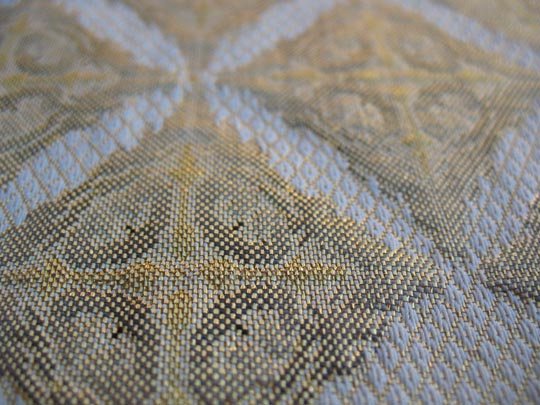
This is a piece of Mihoko's work.
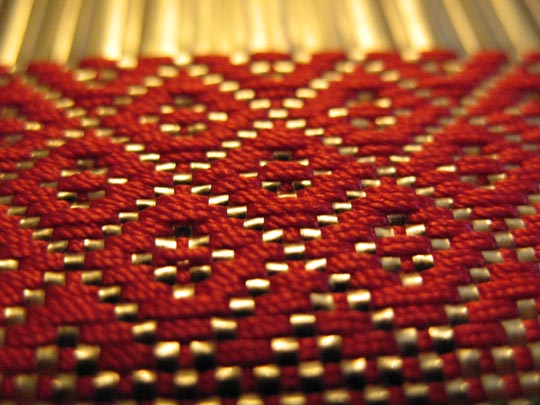
Needless to say, mine is a lot simpler - and riddled with errors in tension and beat. Although by the end of the workshop, I was getting to the point of a two-color inlay brocade design, and my beat was considerably improved. Here's a shot of my warp - a rose-path design, before I got into the second color.
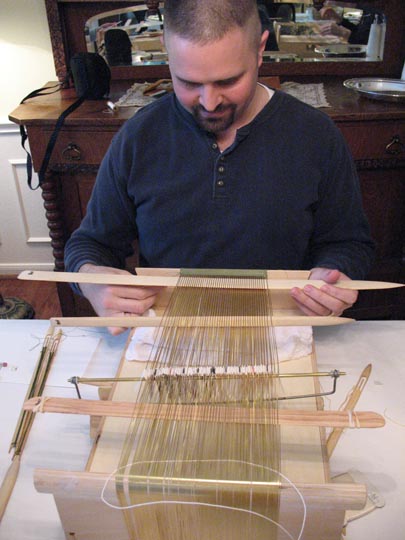
Here's me, hard at work.
I usually work with tablet weaving silk or other fine thread at about 250 threads
per inch...
so when I tell you this is tedious and delicate work, you know that I know what I'm talking about.
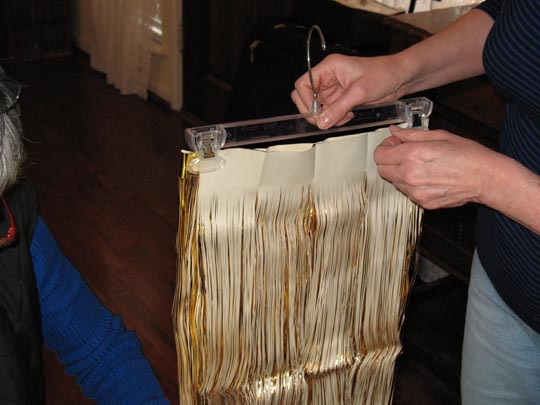
The warp really is paper.
It is treated with a special laquered surface. The best traditional stuff is leafed with real gold, silver or platinum. The student grade is a synthetic, but looks pretty gold-y. The warps are made of rice paper, and are hand-cut with a special tool. The one I'm using is 35 cuts per each 3.3 centimeters - which works out to about 25 ends per inch.
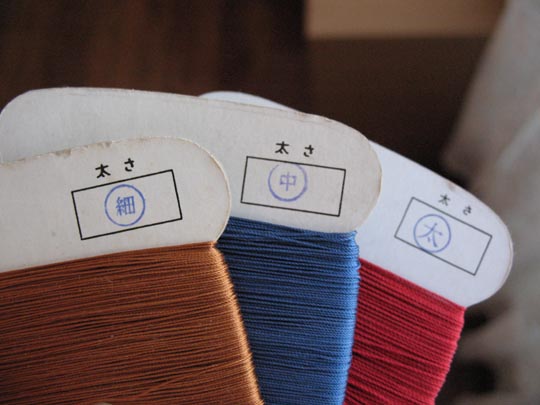
The weft is a special kind of silk; it's a highly twisted 3-ply organzine. I'm guessing around 600 denier, for the weight I'm working with. There are three sizes here; they are marked at the top with a Japanese symbol that indicates the size. I'm using the medium-sized weft, like the blue in the middle.
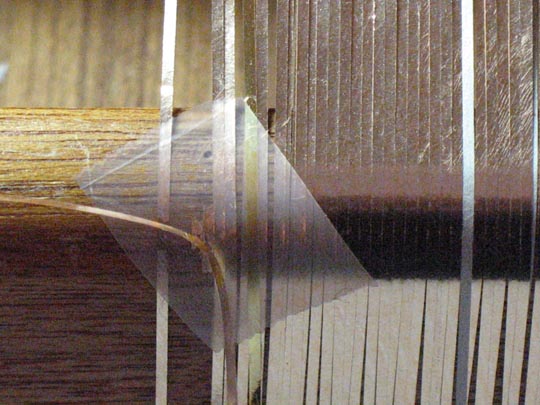
Every once in a while, you're reminded that it really IS paper...
like when Mihoko fixes something with Scotch tape!
Amazingly, we only saw 2 broken warps, with seven weavers working for five days.
The two broken warps were on a warp that is nearly 30 years old, so the paper
is a little weaker.
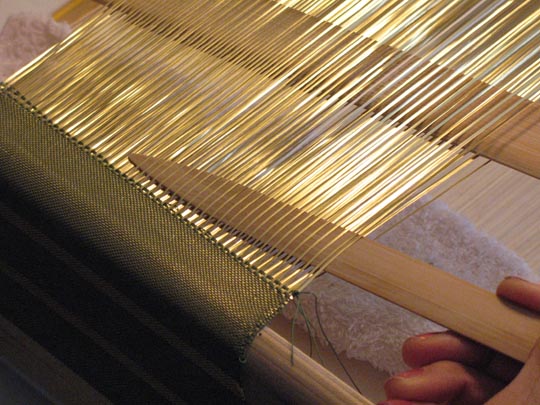
The beaters, shuttles, and pickup sticks are all bamboo. Everything
is sanded and finished very smoothly, to avoid snagging the paper warp or the
silk weft.
Here, Mihoko is sitting at my loom, showing us how to pick up for a 3/1 twill.
Here are some more eye-candy shots of Mihoko's work:
NOTE: this isn't my work, but I took the photos, with permission from the maker.
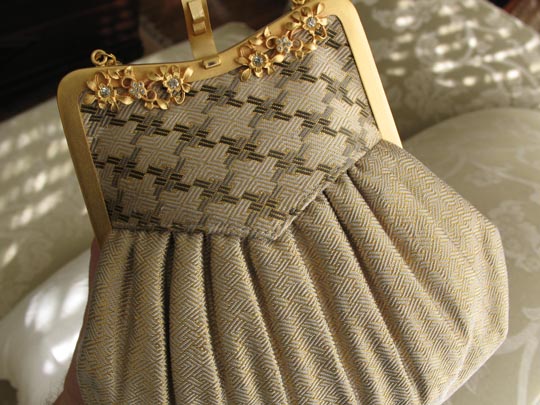
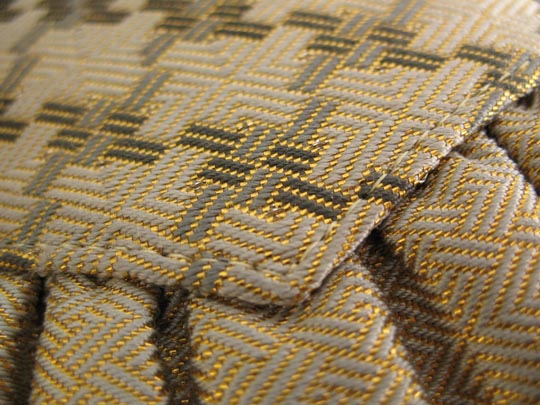
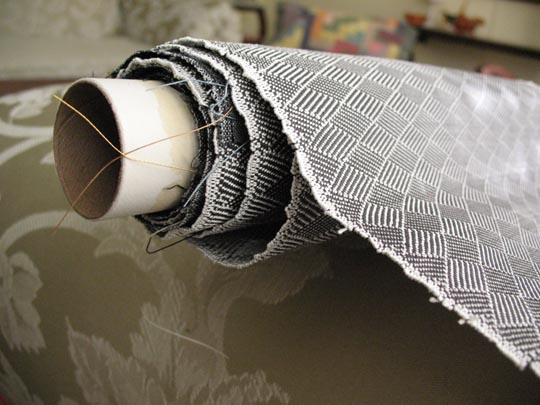
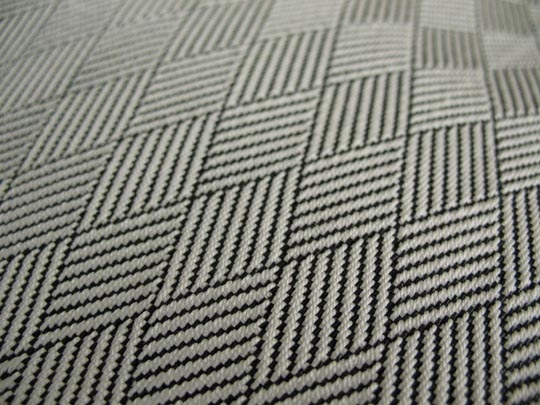
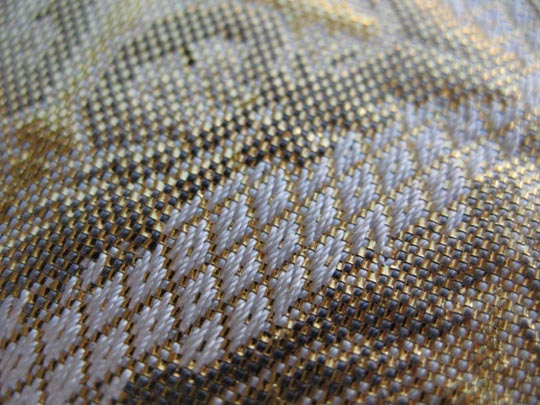
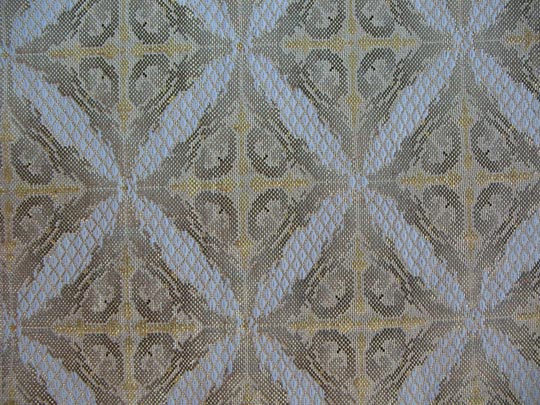
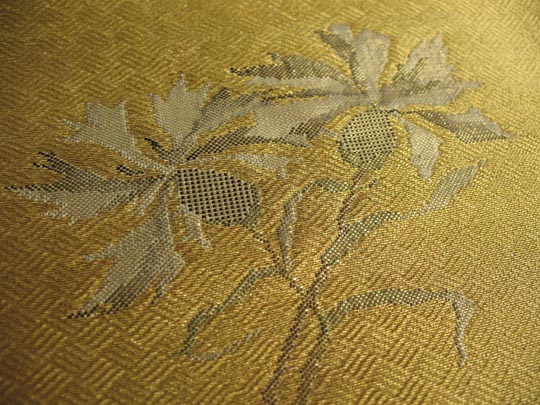
This flower on gold has 16 colors (shades of gray) in it. You really can't appreciate that fact, until you get close up.
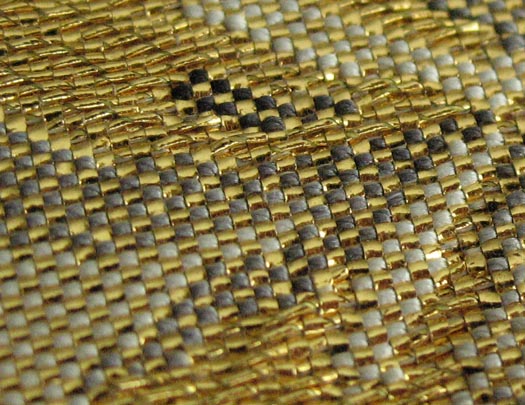
Have I mentioned lately that I love the Canon A630 that Chris got me for Christmas?
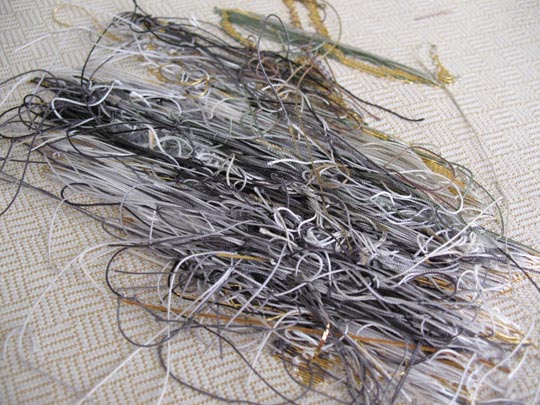
The silk makes long floats on the back, but because of the sturdiness of the paper warp, it doesn't cause buckling. That is, when Mihoko does it. Mine kinda buckles, but it's getting better.
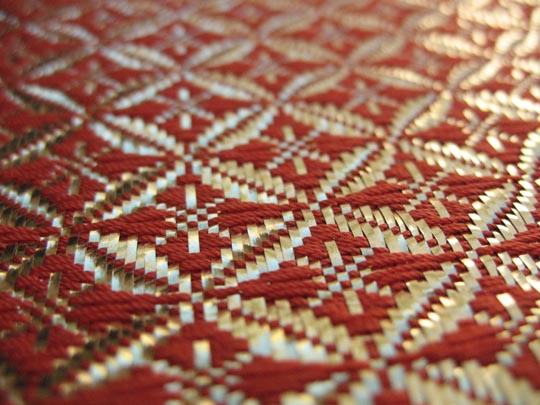
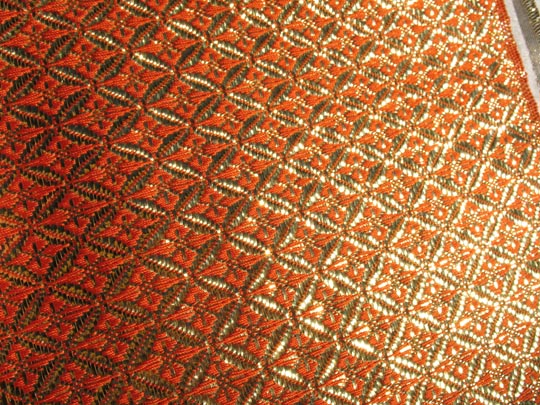
These are difficult to light properly for photography, because bright light tends to glare off of the gold. It's amazing the sheen that comes off the warp threads in the sunlight.
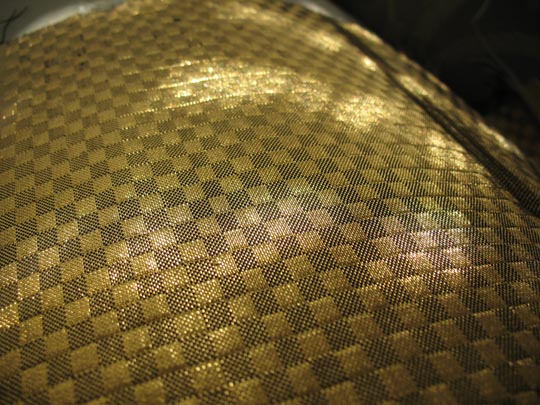
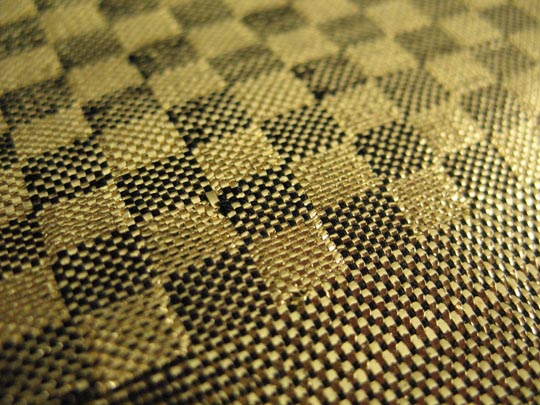
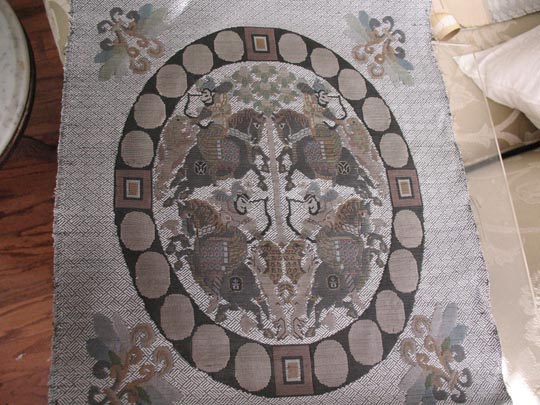
This piece is based on a design (on a piece of some other medium, I couldn't figure out what) in the Shoso-in Treasure House, a museum founded in 800 AD.
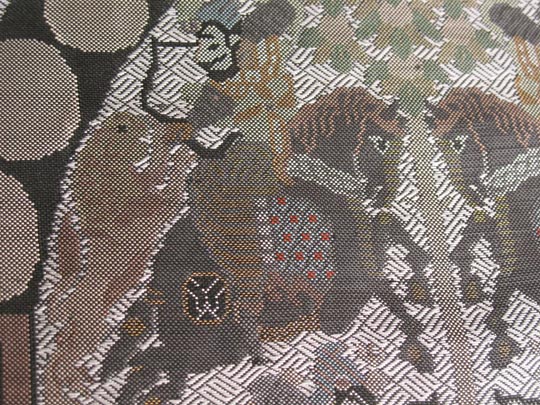
The Persian warriors are on horseback, shooting lions.
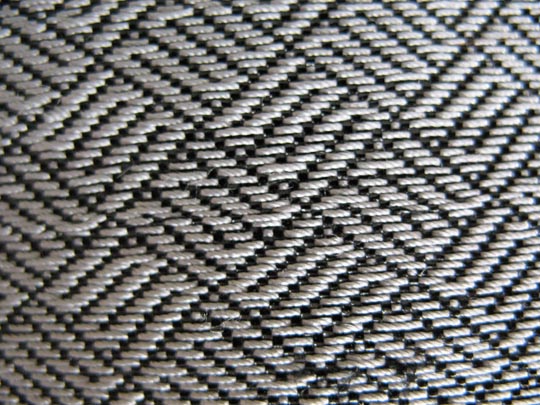
The background is this meandering twill.
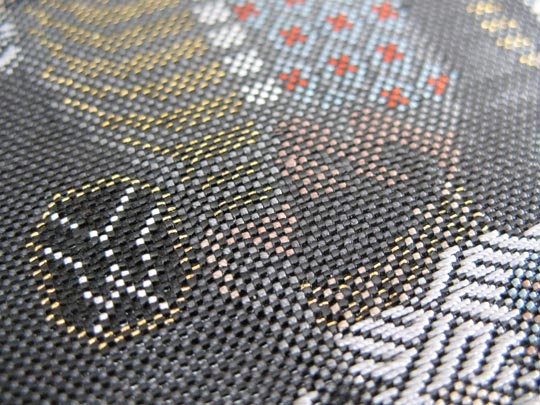
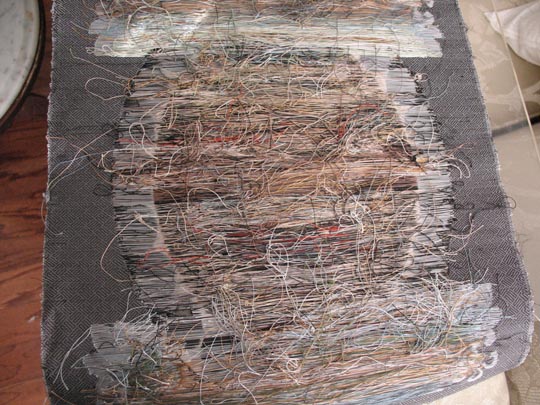
The back is just a dizzying pile of extra strings. Some of them appear only briefly in the surface. Mihoko said that in the complicated parts of this pattern, she would only be able to pick 2 or 3 rows in a six-hour day of weaving.